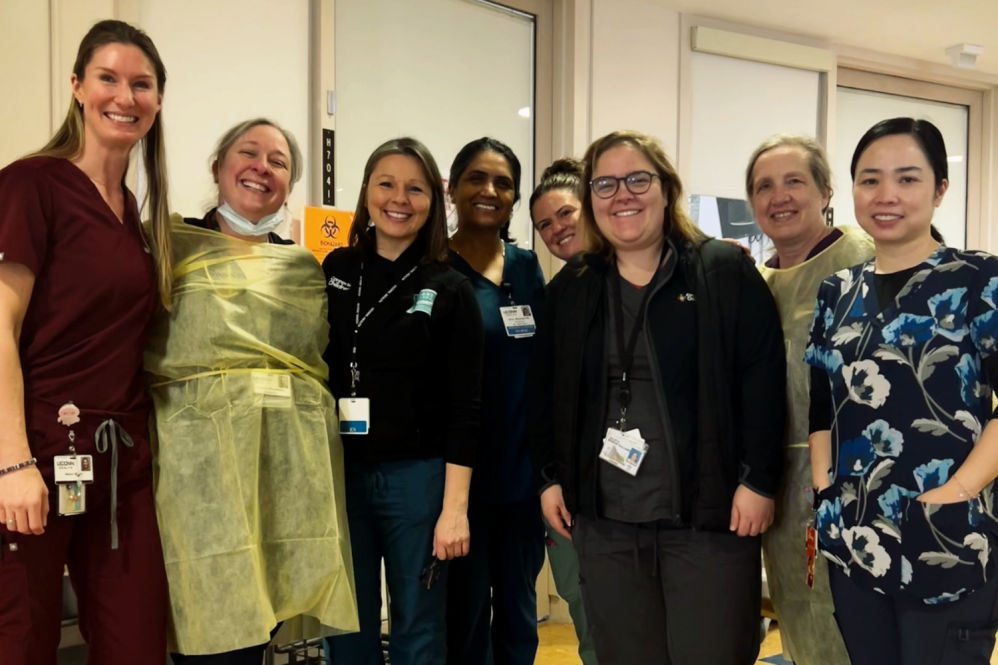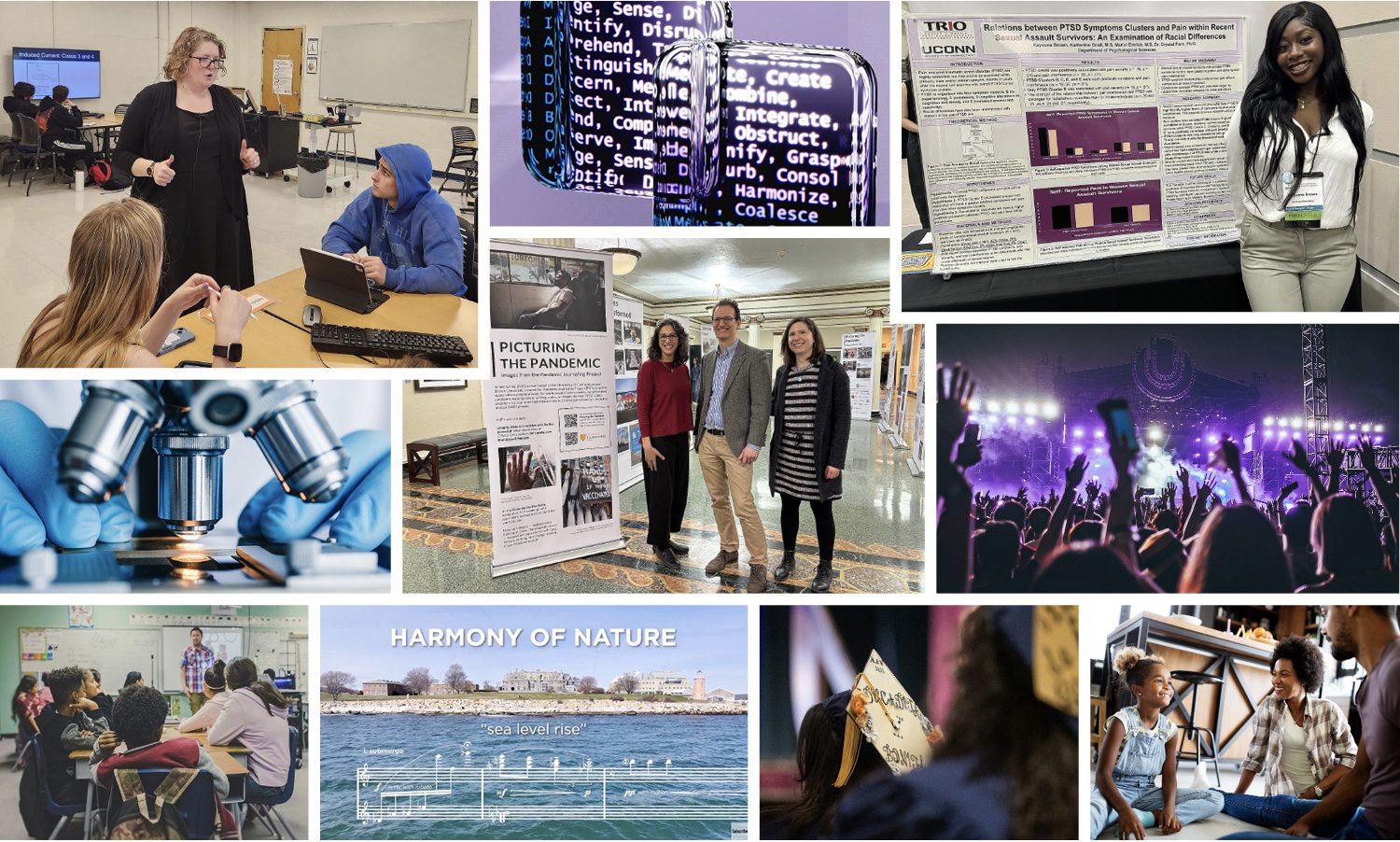In a global first, UConn Health, in collaboration with Connecticut Children’s, has dosed a patient in a groundbreaking clinical trial testing gene editing technology to treat glycogen storage disease type 1a (GSD1a), a rare inherited metabolic disorder, marking the third “first-in-human” trial for GSD1a conducted by this research team.
This clinical trial is evaluating a therapy that uses permanent gene editing, one of the most novel technologies in modern medicine. Instead of delivering a missing gene, this approach edits a single letter of DNA directly inside the patient’s liver cells, thereby correcting the genetic error at its source.
“This therapy marks a groundbreaking achievement for the treatment of GSD and similar rare diseases,” said Juan C. Salazar, MD, Chair of the Department of Pediatrics at the UConn School of Medicine and Physician-in-Chief at Connecticut Children’s. “This milestone represents a beacon of hope for patients and their families worldwide, showcasing out commitment to advancing healthcare and saving lives.”
GSD is a metabolic disorder caused by an enzyme deficiency where the liver fails to break down glycogen into glucose, causing the body’s blood sugar levels to drop. The disorder is devastating, causing potential damage to kidneys and liver along with other serious side effects, including death.
The trial is being led by Rebecca Riba-Wolman, MD, a pediatric endocrinologist in the Department of Pediatrics and a physician-scientist at both the Connecticut Children’s Research Institute and UConn Health. She serves as the principal investigator for the study, with Karen Loechner, MD, Ph.D., and Malaya Mount, MS, RD serving as sub-investigators.
“This is truly a next-generation therapy,” says Riba-Wolman. “What makes this especially exciting is that this technology allows us to make a permanent edit in the liver cells of patients with GSD1a. If it works, it could last a lifetime.” Though in its earliest phase, the potential of this technology extends far beyond a single disorder. “Liver cells are one of the most accessible organs for genetic treatments, so while this is a treatment for GSD1a, it is also a stepping-stone,” Riba-Wolman explains. “What we are learning here could be applied to other diseases in the future.”
The therapy is based on nucleotide editing and is part of the cutting-edge field born out of the precision technique of CRISPR-Cas genetic editing technology, which earned the Nobel Prize in 2020. The trial corrects a single nucleotide (one of the DNA “letters” A, G, C, or T) that is the basis for the most common mutation causing GSD1a. This targeted approach could allow for lifelong correction of the underlying disease. To date, there exists only one FDA-approved gene editing treatment in the world – for sickle cell disease.
The trial has generated excitement among researchers and patients alike. Many families with GSD1a have followed the progress of the gene editing mouse studies that laid the foundation for this moment. For them, this trial represents the real possibility of a long-awaited breakthrough. “This is not just a clinical study. It is a hopeful step forward for a community that has been waiting years for new treatment options,” says Riba-Wolman.
While the first trial participant was from out of state, UConn Health and Connecticut Children’s have built a robust local and regional GSD1a community, supported by a dedicated clinical team that includes physicians, nurses, study coordinators, research dietician and others, many of whom played a critical role in preparing for this first infusion.
“This kind of clinical research requires an enormous amount of collaboration,” says Riba-Wolman. “I cannot say enough about the commitment of UConn Health to our research. From nursing leadership to pharmacy to respiratory therapy, everyone came together to make this possible.”
Though results may not be fully appreciated for several years, this historic milestone underscores the growing reputation of UConn Health and Connecticut Children’s as leaders in rare disease research and gene-based therapies.
“We have now been involved in three first-in-human trials for GSD1a, and this one is the most ambitious yet,” says Riba-Wolman. “It is incredible to think how far the science has come, and to be part of that here at UConn Health and Connecticut Children’s is something really special.”
In partnership with Beam Therapeutics, this trial builds on decades-long leadership in GSD1a research, and it is expected to help shape the future of treatment not just for this rare condition, but for all genetic diseases.
We’d like to acknowledge the significant contributions of the dedicated research team, including Shaylee King, administrative director of the Department of Pediatrics; study coordinators Vi Nguyen and Shila Bhandari from the Department of Pediatrics, and Julieta Bonvin Sallago from CT Children’s; as well as research nurses Stephanie Ruggiero, Travis Healy, Love Joy Tacadena Melendez, Osob Yusuf, Darby Lamontagne, and Amber Barry, all from the Department of Pediatrics.
If you or a loved one have GSDIa and are interested in learning more about this trial as well as other Clinical Trials for GSDIa, please contact pediatricclinicaltrials@uchc.edu for more information.



